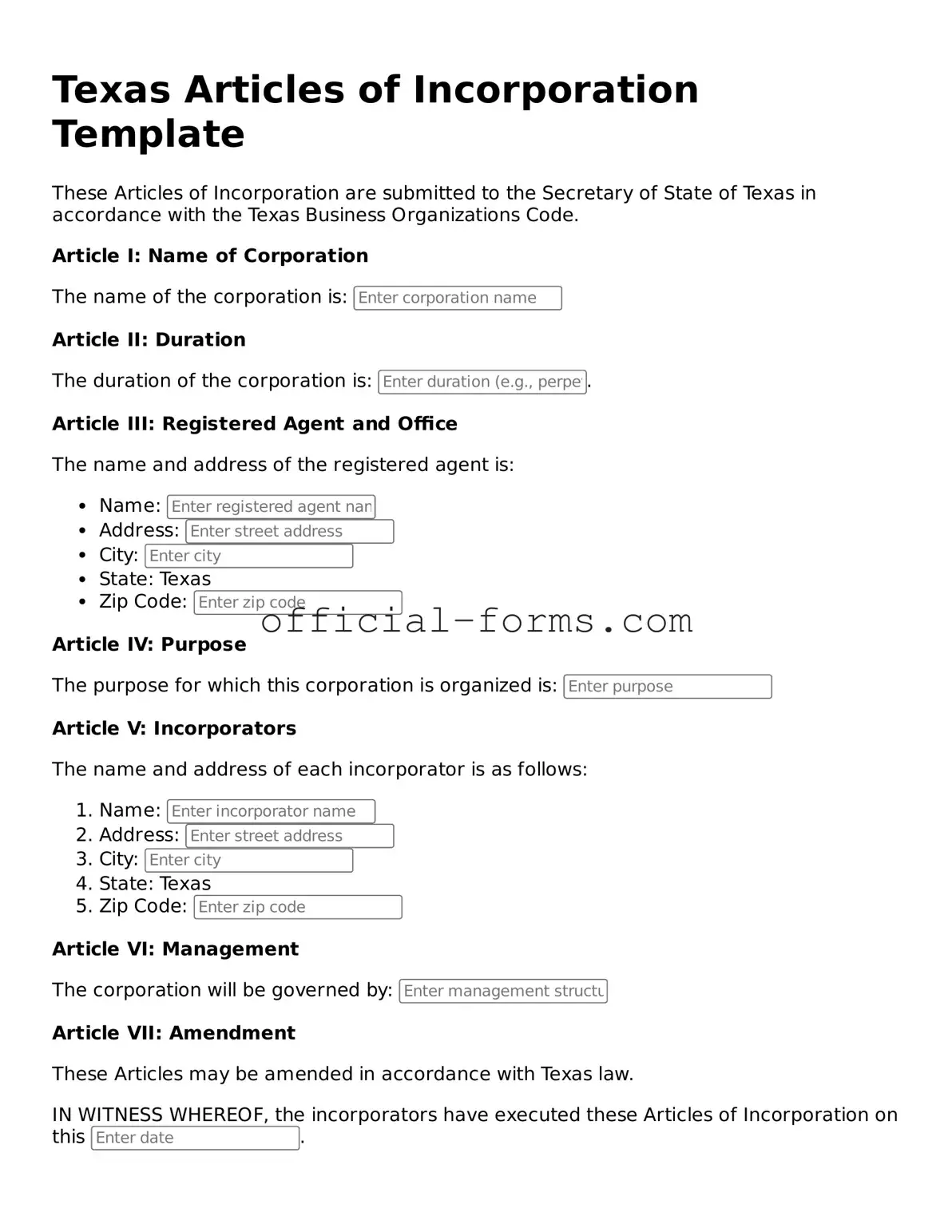In the state of Texas, the Articles of Incorporation form serves as a foundational document for those looking to establish a corporation. This form is essential for legally recognizing a business entity and outlines critical information necessary for its formation. Key aspects include the corporation's name, which must be unique and compliant with state regulations, as well as the purpose of the corporation, which provides insight into its intended operations. Additionally, the form requires details about the registered agent, who acts as the official point of contact for legal documents and notifications. Incorporators, the individuals responsible for filing the Articles, must also be identified, ensuring accountability in the formation process. Furthermore, the document often includes provisions regarding the management structure, such as the number of directors and their powers. Understanding these components is crucial for anyone seeking to navigate the incorporation process in Texas, as they lay the groundwork for both compliance and operational success.
